



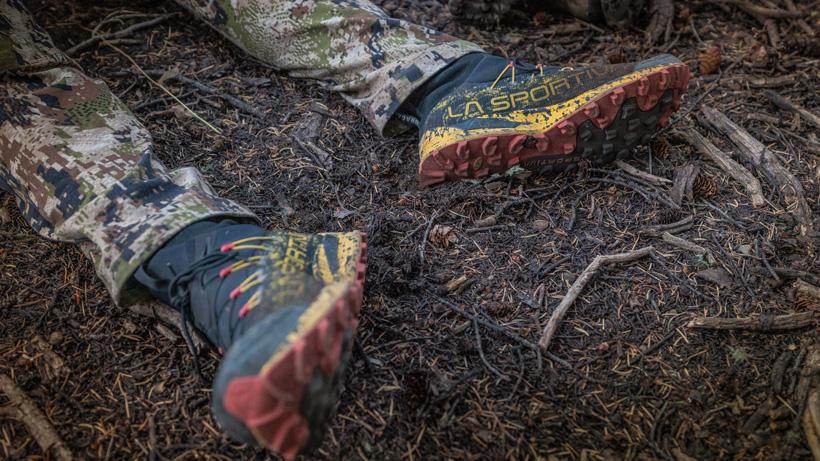
These are La Sportiva Uragano GTX shoes. They worked perfectly last year in Wyoming.
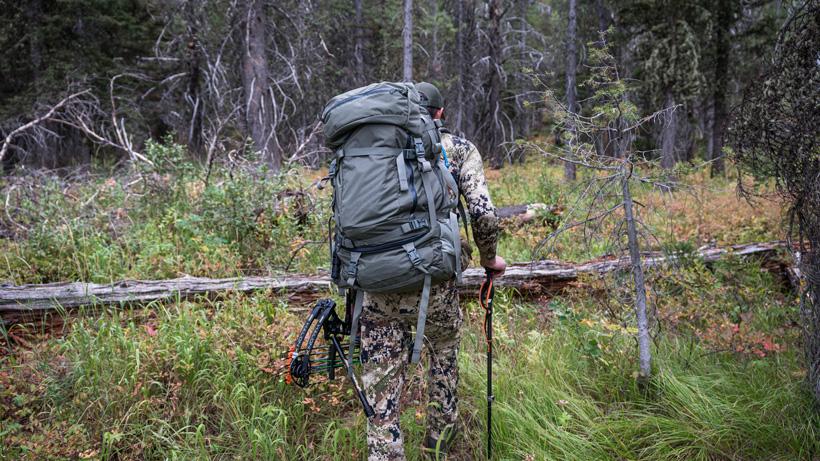
On a 2018 Wyoming elk hunt, I was using the Mystery Ranch Beartooth 80 backpack. Notice how handy the Carbon Whippet is when navigating thick timber.

Early season archery elk bivy sack style camp. Very minimalist and allows you to sleep anywhere.
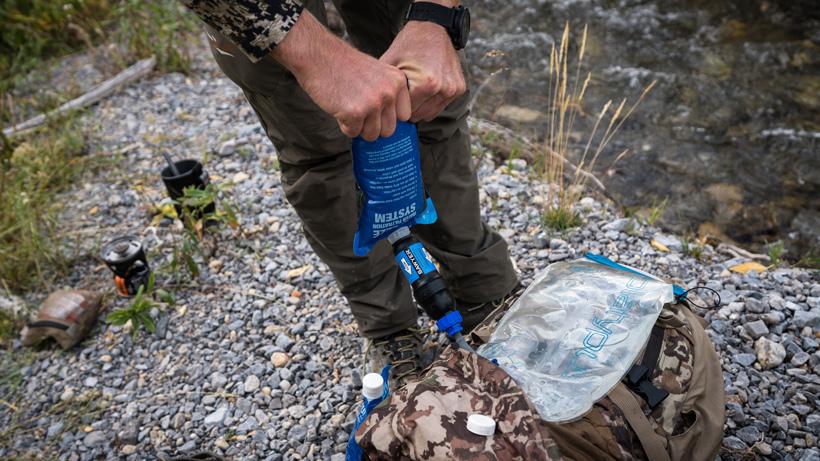


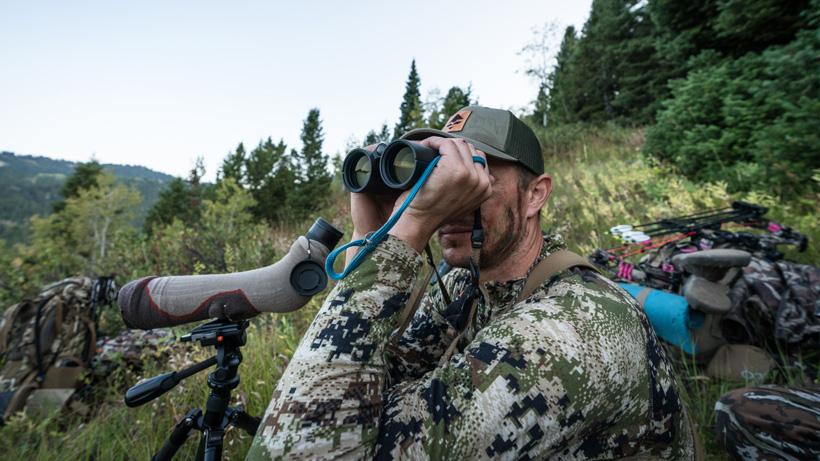
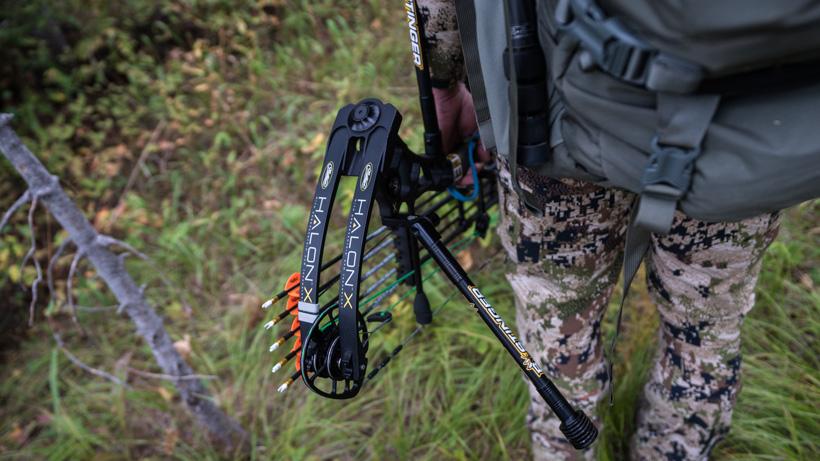
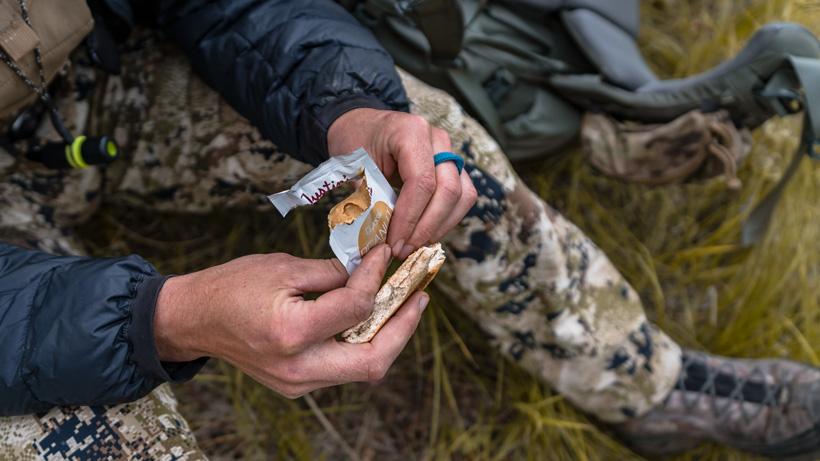

Every year, the season creeps up on me and just like that it's time to go elk hunting again. I’m not complaining; it’s just the older I get, the faster time seems to fly. Like every summer for the past 20 years, I’ve spent almost every morning shooting my bow and logging miles so that I can make the most of the days I get to spend in the elk woods each fall. I’m also thinking about my gear selection all the time. Specifically, I’m considering what has worked well, what new gear would be good to add to my system and what I can live without. I have outlined my gear list below and I’ll call out a few new pieces that I have added. Currently, I have a couple of elk tags. I’ll be hunting early season in an over-the-counter (OTC) area in Idaho and, then, the best of the rut dates on a general season elk tag in Wyoming. In all, I’ll be doing about 20 days of archery elk hunting in two states. Those will be backpack hunts—most often broken out into five-day hunts.
TRAIL KREITZER'S 2019 ARCHERY ELK HUNTING GEAR LIST
These are La Sportiva Uragano GTX shoes. They worked perfectly last year in Wyoming.
I often get asked, what gear do I really need to go a backpack elk hunt and where should I spend my money. To answer that, I think beyond your weapon and tag, there are few categories to consider—the first being a set of boots or footwear that is going to get you where you need to go. Make sure your boots/shoes are broken in and that you can go the distance. Nothing ruins a hunt like sore feet. As you can see, I will be taking two pairs of footwear with me. In regards to when I might choose one over the other, I like the stiffer mountain boots for steeper terrain when I need the “bite” into the slope when climbing. I like the trail running shoes in milder or in really rocky terrain. What I am finding is that, in really rocky terrain, my bad ankles actually do a lot better when I can “feel” the ground and the grippy rubber sole provides good traction.
In addition, quality clothing can help a lot. You can get by without the best of everything, but a good layered clothing system will certainly make you more comfortable and successful. SITKA had some great new pieces this year. For me, I’m really loving the new Kelvin Active Hoody as a warm quick drying mid-layer.
I don’t pack much in terms of clothing. I don’t pack any extra socks, pants, shirts or, even, underwear. If I pack any extra clothing, it’s to keep me dry or warm. I pack rain pants, a rain jacket and insulation jackets and pants. I have on occasion—during warm mid-day hunts—taken the time to do some laundry and bathe in the backcountry.
On a 2018 Wyoming elk hunt, I was using the Mystery Ranch Beartooth 80 backpack. Notice how handy the Carbon Whippet is when navigating thick timber.
The next piece of gear is also pretty obvious: if you are going to do a backpack hunt you’ll need a backpack. What should you consider in a backpack? First, it needs to be large enough to meet the demands. For day hunting, anything up to about 3,300 cubic inches is great. Weekend hunting (three days/two nights) will require a bit more room—perhaps, something in the 3,000 to 4,500 cubic inches. For hunts in the five to eight or, even, 10-day range, you will probably need a pack in the 4,500 (small end) to the 7,400 cubic inch range at the top end. Another consideration for a pack is comfort and size. There are some great packs on the market. We carry both Mystery Ranch and Stone Glacier packs. Both have the built-in load shelves for hauling meat out between the bag and frame. Both are well-built and comfortable. Do some research and find the pack that best suits you. Also, make sure the pack fits. Check the size charts and get a pack that fits your body best. The chart above has my pack setup along with some organizational bags and essentials.
Early season archery elk bivy sack style camp. Very minimalist and allows you to sleep anywhere.
Your sleep system is very important. I tell people all the time: if you can’t sleep at night because you are cold or exposed to the elements or you are just uncomfortable, you will not feel like hunting. Pick a sleeping bag that meets the temperature rating you’ll be hunting in. If you are hunting in mid to late September in elevations from 8,500’ on up, I would suggest something in the 10 to 20 degree range. If you are hunting the desert southwest, a 30 degree bag would likely work and weigh less. What kind of insulation should I get? We get that question quite a bit and it’s a judgment call based on where you are hunting and the rest of your gear. Down insulation is lighter and often sleeps warmer because it’s loftier. The one downfall is if you get it soaking wet, down will not insulate. Synthetic insulation is great for wet environments, but you’ll sacrifice some warmth and add a bit more weight to your pack. Personally, I like a down sleeping bag with a high fill rating (850+). I keep my bag dry by using a waterproof bivy sack paired with a tarp if, indeed, I need it. For September archery elk hunting, I don’t think you can beat the mobile setup that a bivy/tarp system provides. You can make camp almost anywhere and it’s quick to set up and take down. Below is my sleep system for this coming September. In my opinion, put your money into a quality sleeping bag. With good care, it will last you over 30 years. Speaking of sleeping bags, in recent years I have flip-flopped back and forth between a bag and a quilt. The quilt is nice for the weight savings; it’s only 22oz. On the other hand, I have found that I like the coverage and hood of a traditional mummy bag. I am a cold sleeper so I find myself reaching more often for my sleeping bag. It’s 9 oz heavier, but it sleeps warmer and this fall I will be using it instead of the quilt for my backpack hunts. One final tip: at only 2 oz, the Sea to Summit Aeros UltraLight Pillow always finds a way into my pack.
Camp kitchen and water treatment is the next section of gear I’ll touch on. I like a water bladder, especially during that September timeframe when it’s typically not all that cold. If you get into freezing temperatures, the hose can freeze and, in that case, I’d suggest bottles. A bladder allows me to stay hydrated throughout the day, which causes me to feel less fatigued. Elk hunting is a physical activity—you’re going to sweat—so you’ll need to rehydrate. In regards to water treatment, I’ll be using the Sawyer Squeeze. If you have good clear running water, it’s hard to beat. It’s simple and quick to use. In addition, I always carry water treatment tablets. Before you decide not to treat your water, think about the days you’ll lose if you get a water-borne illness. It’s not fun and you only get so many September days to chase elk.
My stove system is pretty basic. I only need a pot large enough to boil a couple cups of water once a day. For that reason, I err on the side of weight savings. My total stove, fuel and pot set weigh in at around 11 oz. I recently updated to a Seek Outside Bail Handle pot. It’s titanium and a bit smaller than my previous pot, but also has the bail handle. I like that I can lift it off a burner with a stick or I can use it to hang over an open fire if need be. Another question we get asked is how much fuel do you need? I would suggest that if you are boiling two cups of water once a day, 3.9 oz canister will last ten days. If you are doing coffee in the morning and meals at night and using it a few more times throughout the trip, you would need a couple of 3.9 oz canisters or the larger 8 oz or 16 oz canisters.
There is a bunch of miscellaneous gear that is required for a backpack elk hunt. One of the more important ones that I want to touch upon are trekking poles. I prefer the Black Diamond Carbon Whippet, which has an ice pick style handle. I like that the handle feels more like a cane in my hand and the pick can be used for clearing out a bed at night or clearing out a pocket of water to filter from. A trekking pole(s) will save your knees and keep you on your feet by offering that additional point of contact with the ground.
A kill kit is a must. I carry a couple of knives: one fixed blade and one replaceable blade with about five extra blades. I also carry a small pack saw for skull capping a bull or even cutting shooting lanes if I am sitting at a water hole. Game bags are a necessity. I like to carry two of the Caribou Gear High Country bags and two larger ones from the Muley set. Between those, I can fit a boned-out bull into four bags. I also pack a sheet of polycryo, which you can buy at any Home Depot or Lowe’s. Basically, it’s a clear plastic sheet used for window covering; the brand is generally Frost King. It’s extremely lightweight and, in addition to serving as a ground cloth for my bivy, I use it to lay quarters on while I am boning meat out. Along those same lines, we often get asked how many coolers are required to fit a bull elk. For a boned-out bull, you’ll likely need at least two 105 liter coolers.
I pack a lot of other necessities, too, which you can see in the chart above. Do not forget a fire kit, a medical kit, something to navigate with that you know how to use (GPS/Phone/Compass) and lighting. A few other items you do not want to forget that are going to directly impact your probability of success: wind checker and calls. You can fool an elk’s sight and their hearing, but you very rarely will fool their sense of smell. Play the wind at all costs. There are many styles of calling. I personally do not bugle all that much. I pack one to use as a locator, but I have had better success calling a bull in by getting in close and then using a cow call. I like the Phelps E-Z-Estrus, the Maverick reeds and the Rocky Mountain Game Call Black Magic reed. Everyone does things a little differently. My style of hunting has often been to shadow a bull/herd and then get in close mid-morning when they are nearing a bedding area and use cow calls to coax a bull in close.
I think every elk hunter should have a set of 10 power binoculars around their neck and a rangefinder close at hand. One of the primary reasons that bowhunters miss is because they fail to range the target. You may not have time to range the bull as he’s making his way into your setup; however, prior to that, you often have time to range several trees/bushes. Doing so will give you a reference and take the guesswork out. For the early season or trophy hunts, I also like to utilize a tripod and spotting scope. This allows me to evaluate a bull or watch one until he puts himself into a stalkable position. In addition, a binocular tripod adaptor like the Leica Stabilite is a nice addition at only 4.8 oz. It makes glassing much more enjoyable and effective.
This fall, I will once again be hunting with my Mathews Halon X. I have a few other bows and some of them shoot really well. I have a 2019 Traverse that I set up and shot for two months and, although I really like the bow, I still feel more confident in my Halon X. That bow—at 35” ATA—really suits me and, ultimately, the most important thing to me is having pure confidence in my weapon. I get asked about the grip on it from time to time. I like a narrower grip, so I replaced the factory grip with a Shrewd low wrist grip and wrapped it with tennis racket grip tape. The tape has a nice feel in my hand and, more importantly, it provides a repeatable grip. A couple of other add-on items is an arrow holder and the adhesive-backed foam that I put on the shelf of the bow. The arrow holder keeps my arrow in place so it’s not popping off during a stalk and the foam keeps everything quiet should the arrow come in contact with the riser. The foam can be bought at pretty much any craft store.
I didn’t touch on my food for my upcoming hunts in the video review of my gear. Very briefly, I tend to do the same thing for most backpack hunts. I eat a meal bar like the Pro bar for breakfast, cheese, bagel, salami, Frito’s, almonds for lunch and a freeze-dried meal for dinner (Mountain House or Peak Refuel). I also pack snacks to munch on throughout the day, Snickers bars, nut butter packets, dried fruit, Honey Stinger Waffers and jerky. Typically, I try to make sure that the food items I bring are at least 100 calories per ounce.
Good luck this fall, if you have any questions about my gear list or have any other suggestions I would be happy to hear them. All the best and shoot straight!